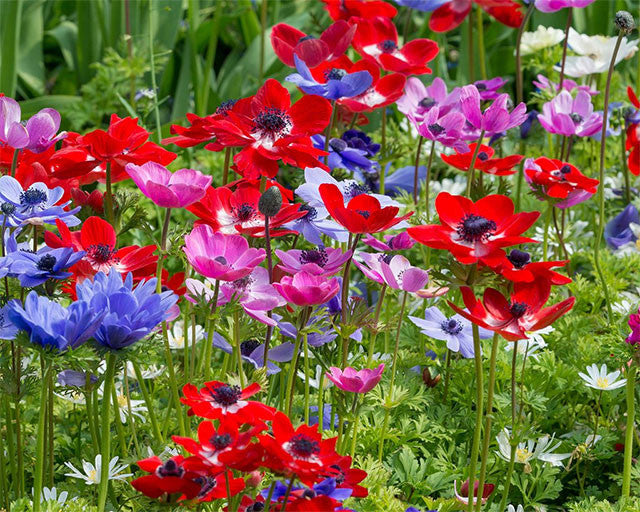
Anemones! All About Anemone Bulbs
The anemone genus comprises 200 or more flower species. They all belong to the ranunculus or Ranunculaceae family. Wild anemones grow throughout most parts of the Northern Hemisphere. As a genus, anemones are prevalent throughout much of the world, including Asia, Europe, Japan, and North America. The fact that native habitats are spread out throughout a large part of the globe complicates botanists’ efforts to find their exact origin.

Interesting Trivia About the History and Meaning of Anemones
The word anemone is derived from the Greek word “anemos” which means “the wind”. The Greek etymological origin is the basis for the reference to these flowers by their common name - Windflower. The connection between anemones and Greek language and culture don't end there. There is a symbolic relationship between anemones and death, especially the famous myth about Adonis and Aphrodite.
According to the legend, Adonis went hunting, and Aphrodite rode her chariot into the forest to follow him. Unbeknown to either Aphrodite or Adonis, her former lover, Ares, disguised himself as a wild boar and followed them into the woods where he attacked Adonis in a jealous rage.

Aphrodite tried desperately to save Adonis. She covered his wound with nectar and rushed his body out of the forest to save his life, but she never had a chance. His soul left his body and descended into the underworld.
Back in the forest, in every spot where drops of Adonis’ blood or nectar fell, crimson anemones sprouted. That story and the mention of anemones became the source from which anemones became symbolic for undying or unfading love.

Anemones have also had a historical significance in various religions throughout the world:
- Anemones had two meanings in Greek mythology: the death of a beloved and the sense of loss that it causes. It is also associated with the first warm spring breezes - the wind;
- In Christianity, red anemones represented Christ’s blood after he was nailed to the cross;
- For the Near East, there was a negative association with anemones because people believed that they were connected with bad luck, or that they were harbingers of disease. The rest of the Eastern world shared the belief that anemones were symbolic of back luck;

- For Europeans, anemones were signs of bad omens, so they associated them with misfortune. They clung to the superstition so steadfastly that they’d hold their breath if they had to walk through a field where they were growing;
- European peasants saw anemones as a good luck symbol, so they carried them to ward off diseases. The characteristic closing of flowers at night and reopening in the morning prompted the belief among many European peasants that the flower symbolised anticipation as people waited for something that was supposed to happen soon;
- In England and Ireland, people believed that the petals were beds for fairies, so when the flowers closed, that meant that fairies were asleep inside;

- In China, red anemones were a symbol of death. For Chinese and Egyptian people, different flower colours represented different illnesses;
- According to the Victorian Language of Flowers, Anemones symbolised all forsaken love;
- Throughout the United States and other parts of the western world, anemones have more positive connotations because they protect people from evil and bad luck.
The Meaning Behind Different Anemone Colours
Flower colours have always had a significance, in particular through the Language of Flowers that was popular during the Victorian Era.
Pink and Red represent lost love - either through forsaken love or through the death of love (meaning the death of a loved one.)
White is a sign of death and bad luck, and in Eastern cultures, white anemones are used for funerals.
Purple and Blue, which are typical anemone colours, represent anticipation or safety. They protect people who wear, carry, or have blue or purple anemones in their homes from evil.
Medicinal and Other Uses For Anemones
During the Middle Ages, herbalists used anemones to treat gout and headaches. Since all anemone species and Cultivars are poisonous, they are no longer used as herbal medicinal remedies.
Purple-flowered varieties are boiled to produce a light green dye that is used as a fixative to set dye colours on textiles, yarns, and even for Easter eggs.
Three Main Anemone Divisions According to Bloom Time
Group 1 encompasses Species and Cultivars that bloom in spring and that are grown from tubers or rhizomes. Anemone Blanda (Grecian Windflower), and Anemone nemorosa (European wood anemone) belong to the first group.
Group 2 contains species that bloom in spring and summer. Anemone coronaria, including the Cultivars belonging to the de Caen group, belong to the second group.
Group 3 includes species that bloom during the summer and fall months. These varieties are characterised by their fibrous roots. They do best in places where the soil is moist, and the light is dappled. Anemone hupehensis (Chinese anemone), is one of the species in the third group.
Two of the Most Important Anemone Species and Cultivars
Anemone Blanda is known by several common names, including Balkan Anemone, Grecian Windflower, and Winter Windflower. Anemone Blanda is the species that is thought of in connection with windflowers. Its native habitat was Lebanon, South-eastern Europe, Syria, and Turkey. It is considered a tuberous, but herbaceous perennial. Its growth habit is compact and spreading, and it creates a mat-like ground cover. It is one of the lowest growing species of anemones, growing only to a maximum height of 15.25 cm (6-inches.) It is frequently found with bulbs of mixed colours. The flowers of Anemone Blanda look a bit like small daisies or stars. It blooms in early spring before most other flowering plants, trees, or shrubs are in bloom. Flower colours include a dark blue-purple, pink, and white.

Anemone blanda is characterised by a compact growth habit that spreads, creating a mat-like ground cover. It is one of the lowest growing species of anemones, growing only to a maximum height of 15.25 cm (6-inches.) It is frequently found with bulbs of mixed colours. The flowers of Anemone Blanda look a bit like small daisies or stars. It blooms in early spring before most other flowering plants, trees, or shrubs are in bloom. Flower colours include a dark blue-purple, pink, and white. Given the ideal growing conditions, Anemone blanda is the ideal companion for other spring-blooming bulbs. With some thoughtful planning, you can fill your garden with an array of colourful spring flowering bulbs that bloom at different times, ensuring that you can enjoy the splendour of a garden of spring-blooming bulbs that begins in early spring and continues through the rest of the growing season.
Anemone coronaria is known as Poppy Anemone. It is also referred to as Florist Anemone. It is a species that comes from the area around the Mediterranean Sea. It is considered a herbaceous perennial that grows to a height of between 20 cm (7.87- inches), and 40 cm (15.75-inches.) Anemone Coronaria is commonly grown for the florist trade. The Anemone coronaria species produces single flowers on a tall stem. Fully open flowers measure between 3 cm (1.81-inches), and 8 cm (3.15-inches).

Anemones that belong to the de Caen group of Cultivars produce single flowers. The St. Brigid cultivar is characterised by the plant’s large double flowers. An important distinguishing character between Anemone coronaria and Anemone blanda is that the former is frost sensitive. That means that if you choose to plant any of the Cultivars that belong to the Anemone coronaria species, you will have to lift them from the soil before the first frost, or plant them in containers that you can move to a cool dark place where they can rest during dormancy.
Two of the most popular cultivar groups in the Anemone coronaria species are Anemone St. Brigid and Anemone de Caen. The de Caen group are hybrids that were originally cultivated during the 18th century in France in the Bayeaux and de Caen districts of Normandy.
Anemone coronaria ‘Sylphide’ is also known as Garden Anemone ‘Sylphide’ or Poppy Anemone ‘Sylphide’. Like the other anemones in this species, it is considered a herbaceous perennial. The flowers are a dark, pinkish-rose colour, and the centres are black like that of poppies. It has a compact growth habit and an upright erect form and shape. Over time, it spreads in the growing bed. This Poppy Anemone cultivar blooms from late spring into early summer.
Anemone coronaria ‘Bicolor’, known by its common names Garden Anemone ‘Bicolor’ or Poppy Anemone ‘Bicolor’ is a herbaceous perennial. It gets the ‘Bicolor’ part of its name from the fact that the petal colours are bi-coloured. The outside portion of the petals is white. Between the white and the unique black centres, there is an area where there is a pinkish-red colour that is about the same width as the white part.
Ideas to Inspire You to Combine Anemones With Other Spring Bulbs in the Garden
Few sights capture the essence of spring in all of its splendour more than the spring bulbs that burst into bloom before most summer perennials emerge from the ground. Anemones can be combined with other spring-blooming bulbs, including Muscari bulbs (Hyacinth,) tulips, and daffodils. When you plant groups of bulbs that bloom at different intervals during the spring, you are creating a visual spectacle that will please you with its array of colours throughout the earliest part of the garden season.

Anemone Cultivars ‘Blue Shades,’ and ‘White Splendour’ belong to the Anemone blanda species. Both have daisy-like flowers that bloom between late spring and early summer. Their ground-cover-like growth habit makes them ideal companions for taller growing Anemones like those in the coronaria species.
Anemones are ideally suited to growth in containers because of their relatively compact size. Create a showy container garden by combining Anemone blanda ‘White Splendour’ with single-flowered Anemones from the de Caen group using ‘Hollandia’ in bright red and ‘Mr. Fokker’ in bluish-purple. Combine Anemone ‘Blue Shades’ with mixed colours of the double-flowered St. Brigid group.

Create an elegant container for a patio or balcony, walkway or garden path. Combine red and white ‘Hollandia’ bulbs and mauve-coloured “Mr. Fokker bulbs to create a backdrop against the sophisticated and eye-catching beauty of Anemone coronaria ‘The Bride’ for a show-stopping container garden that captures the attention of anyone who sees it.
Planting and Growing Anemone Blanda and Anemone de Caen Bulbs
Before planting any Anemones, soak the bulbs (or corms) in a bucket full of lukewarm water for a few hours.

Anemones in the coronaria species are not frost tolerant. In places where, winters are mild and freezing temperatures aren’t a concern, Anemone coronaria bulbs, including those in the de Caen and St. Brigid cultivar groups, can be planted in fall. In other places, spring planting will ensure that the bulbs are protected from the excessive cold.
Plant Anemone blanda, Anemone de Caen, and Anemone St. Brigid bulbs in early spring for a kaleidoscope of colourful blooms in late spring and early summer. The blanda and de Caen varieties prefer partial shade to full sun, whereas St. Brigid is better suited to full sun.

Till or use a garden fork to loosen the soil in your garden to a depth of 38.1 cm or 15-inches. All of these anemones need to grow in a medium that drains well. Allow a space of 7-9 cm (or 3 to 4-inches) between bulbs when planting. Each bulb should be planted 7-10 cm (3 to 4-inches) below the surface of the dirt. After planting the bulbs, water the planting beds or pots thoroughly. From then on, anemones will do best in slightly moist soil. The location you choose to plant them in and the degree of drainage, either from amendments to the soil, or the site of the growing bed, is the most critical element of Anemone culture and maintenance. Anemones are very easy to grow, as long as the soil isn’t excessively wet or soggy.

Anemones are an excellent addition to any flower garden. Use Anemone blanda to create a blanket of colour that covers the ground or the soil surface in a large pot or container that is filled with anemones or other late spring or summer-blooming flowers. Combine Anemone Species and Cultivars for a vivid display of intensely bright colours.
Anemone blanda is a hardier species than Anemone coronaria and the de Caen and St. Brigid groups. If you plant both varieties in the ground together, place plant markers next to the bulbs where they can be seen above the soil. The markers will help you locate the frost sensitive bulbs at the end of the growing season. You will need to dig them up and place the clean and dry bulbs in a cool, dark place where they can rest during their winter dormancy. Be sure you remember to protect your container-grown Anemones, too.
 |
Susan Klatz Beal |






























































































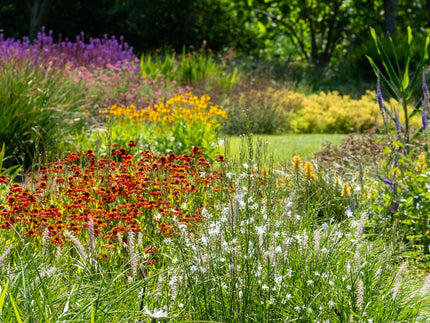
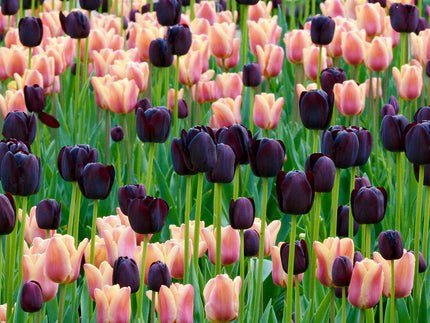
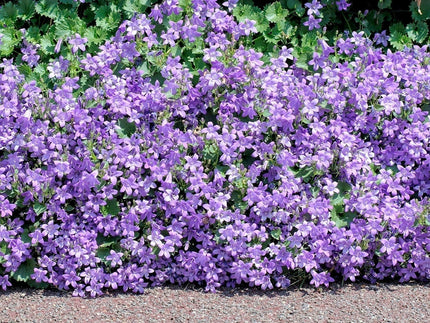
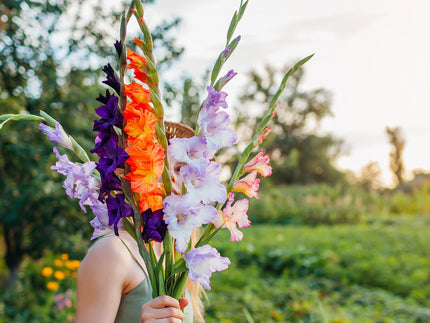
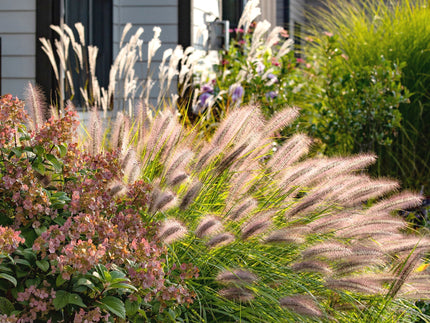
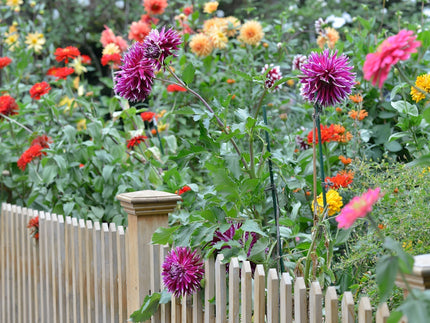
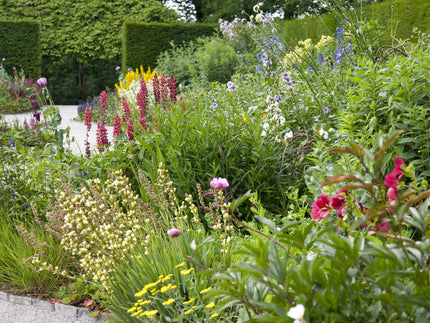
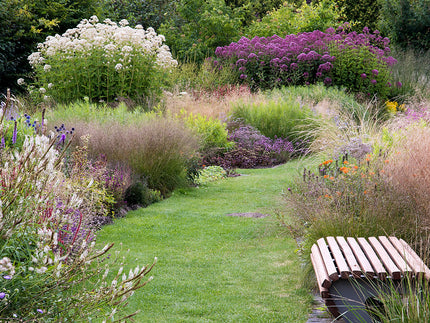
6 comments
Are these questions answered by email or simply ignored? If they are answered at all then the answers should surely be published here.
How are anamone corms produced ?When you take off the seeds from the head there is a little cone like cream head inside . Does this dry out and become a corm ? I have a huge interest and would love to know the answer.
Thank you
Martha Lehane . Ireland
Hi,
For Coronaria de Caen – how long does it take bulbs to sprout after planting ?
Thank you
My anemones have flowered and I feel that I have planted them in an inappropriate location as it is quite shaded. When they have finished flowering and have died back can I uproot the bulbs and dry them for planting in a better location next spring???
Thank you for this useful information. I just purchased a ‘Little Princess Windflower’ Anemone to remember my mother’s passing yesterday, age 88 1/2. I wonder if I could keep inside this fall through the winter in Deerfield NH on my bay windowsill, or will I have nothing to plant when and if I do go outside to add it to my gardens. What are your thoughts? Thanks in advance, Jo